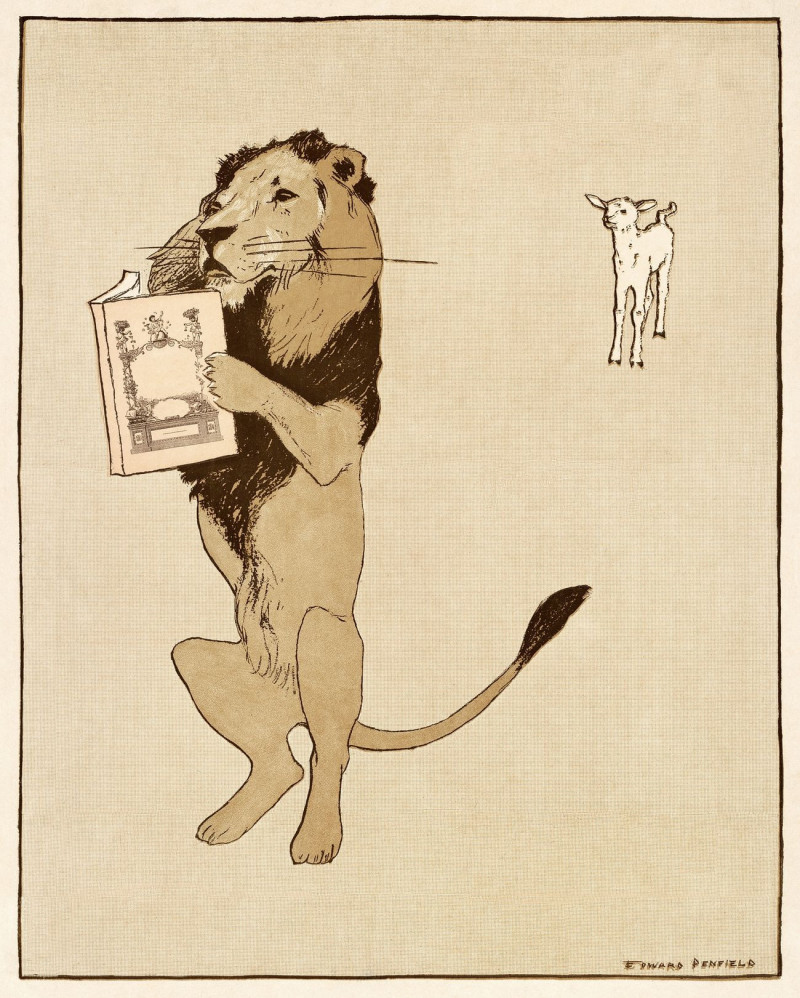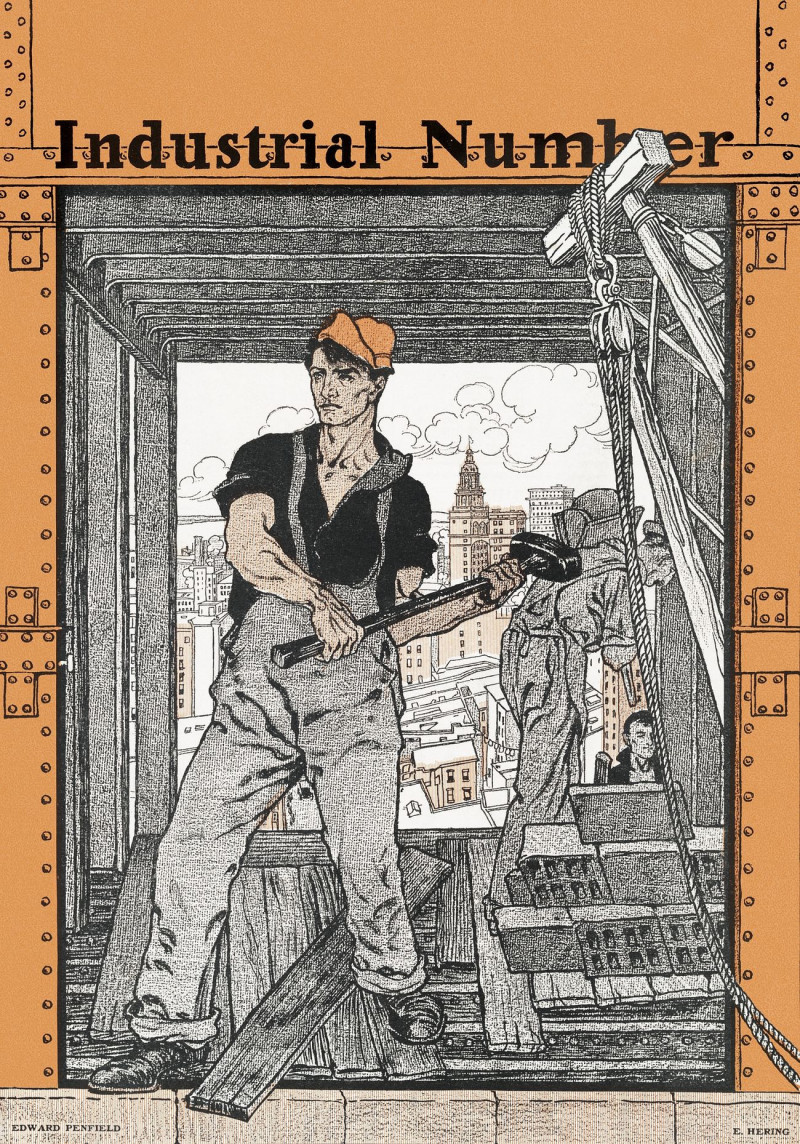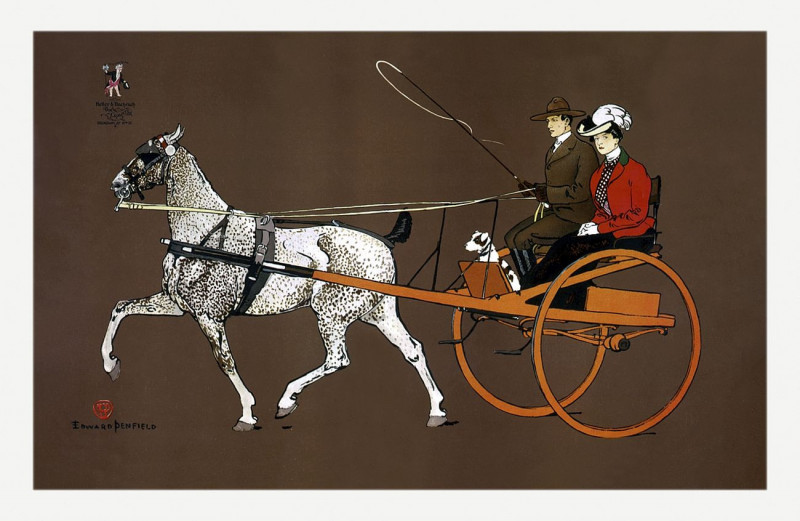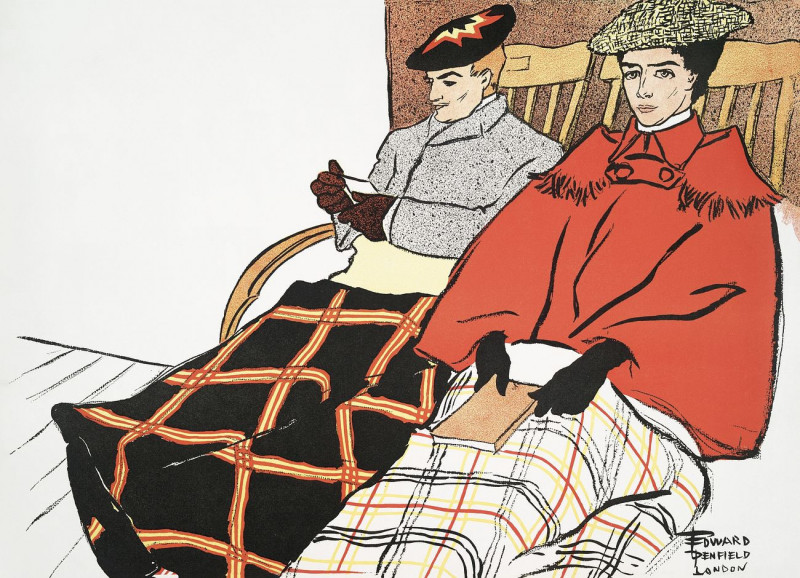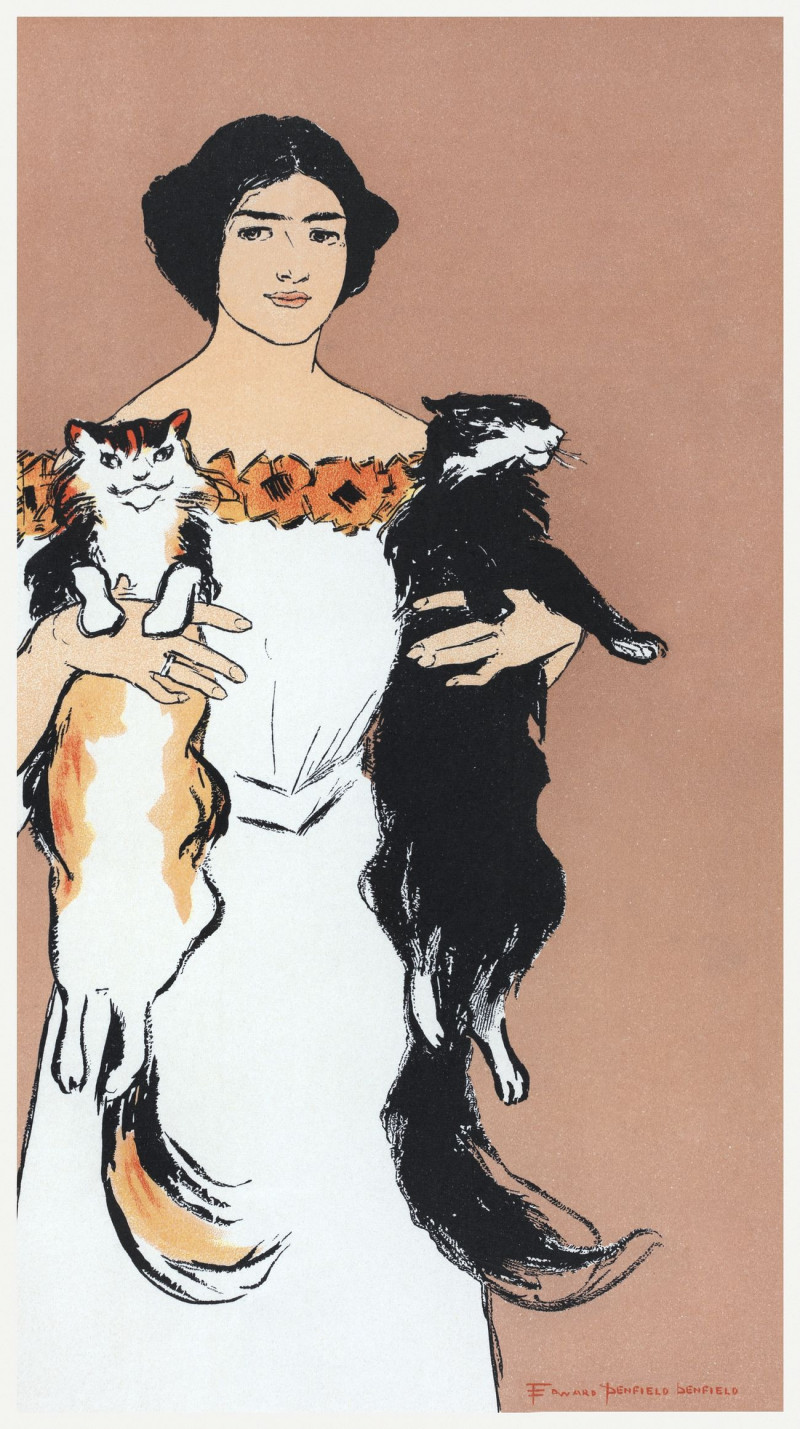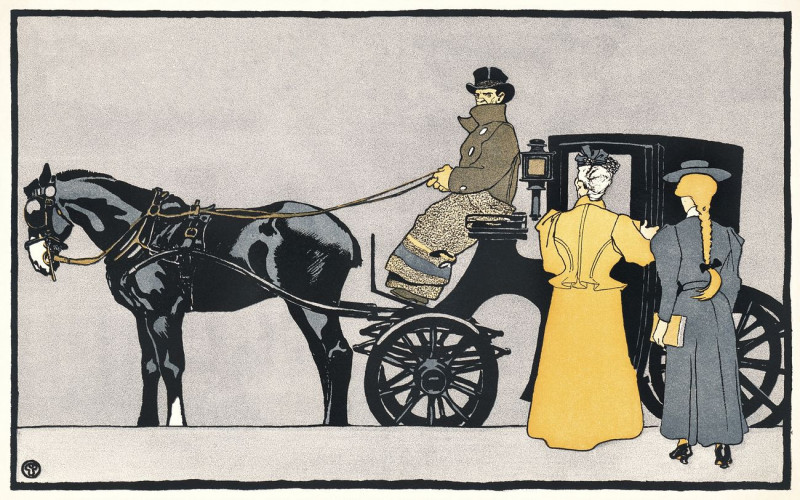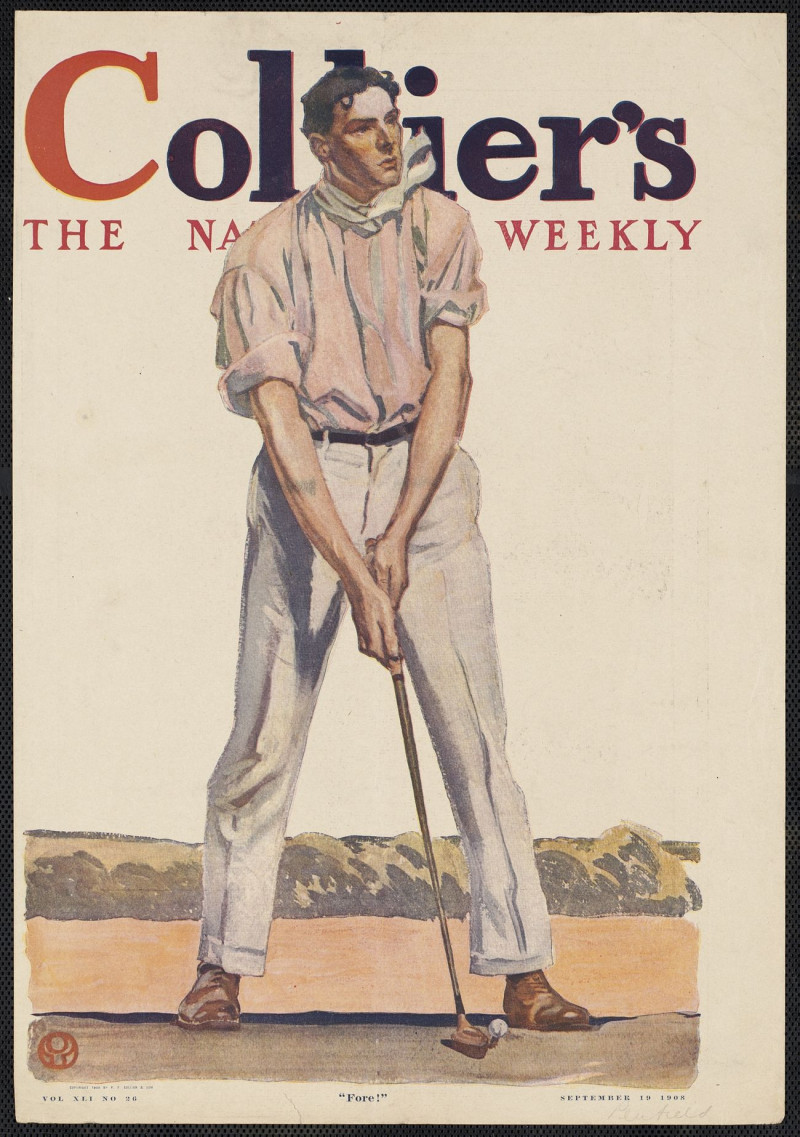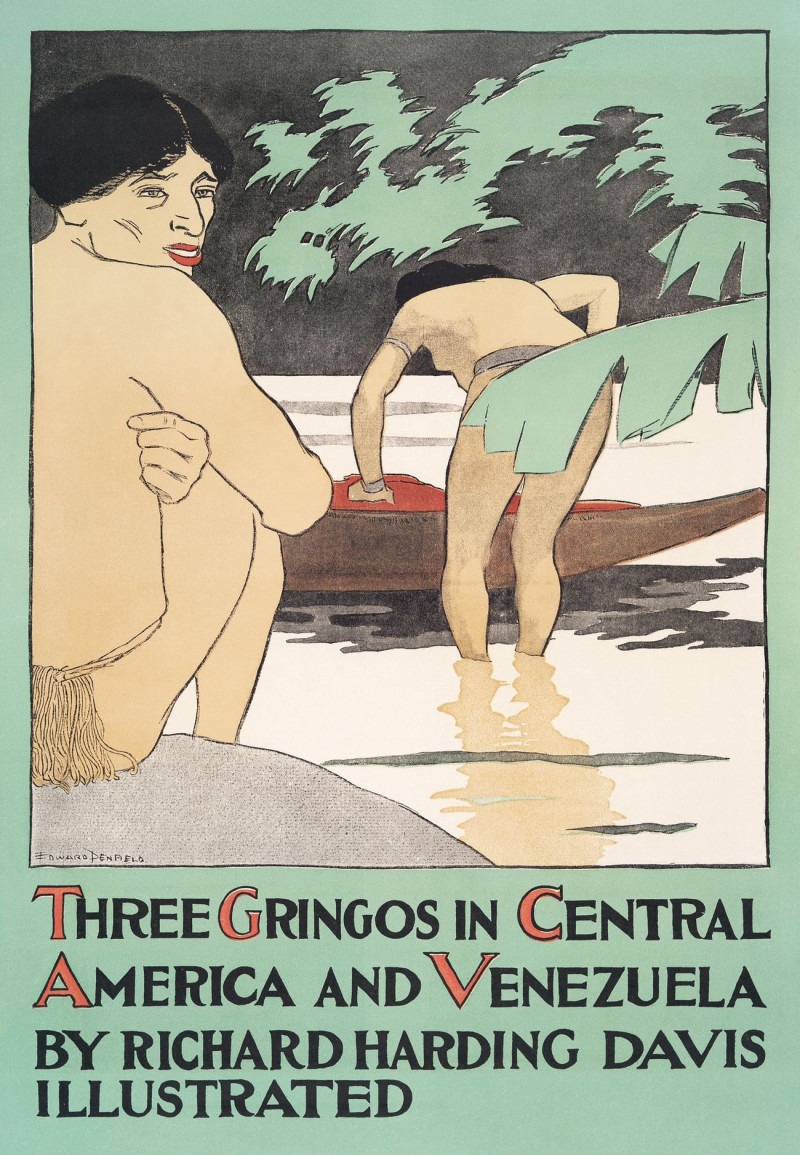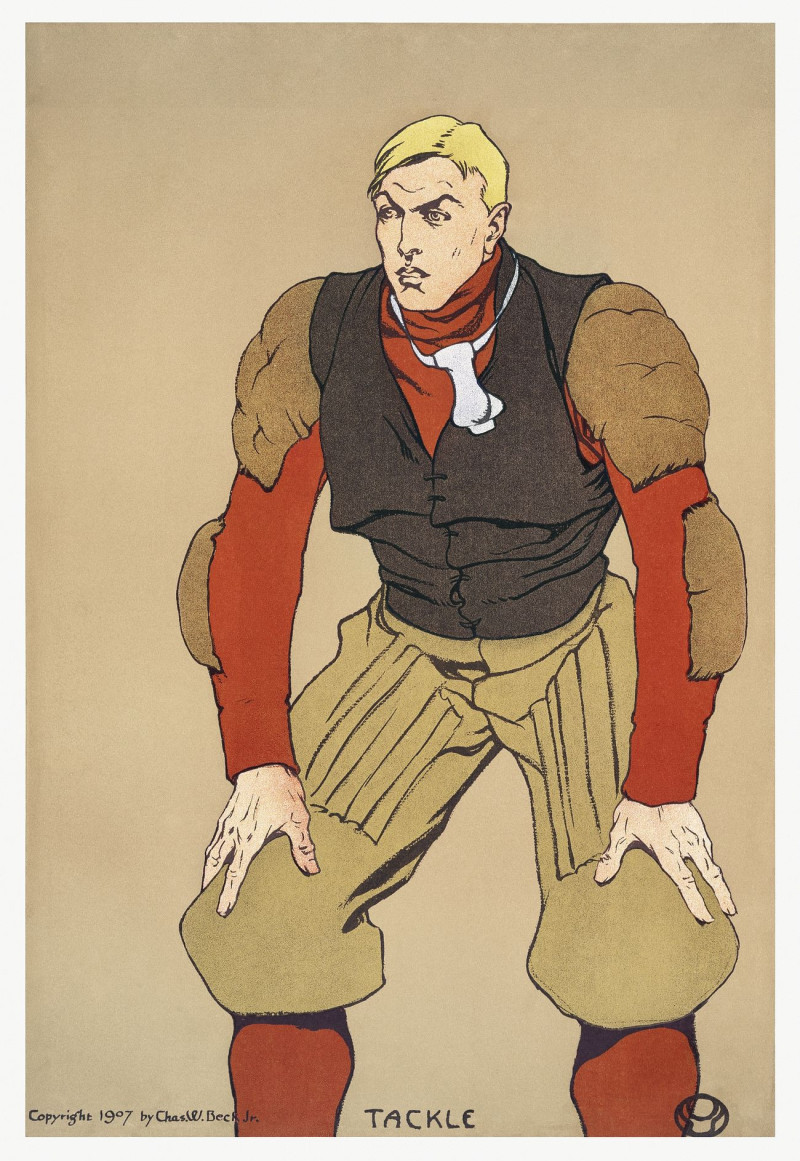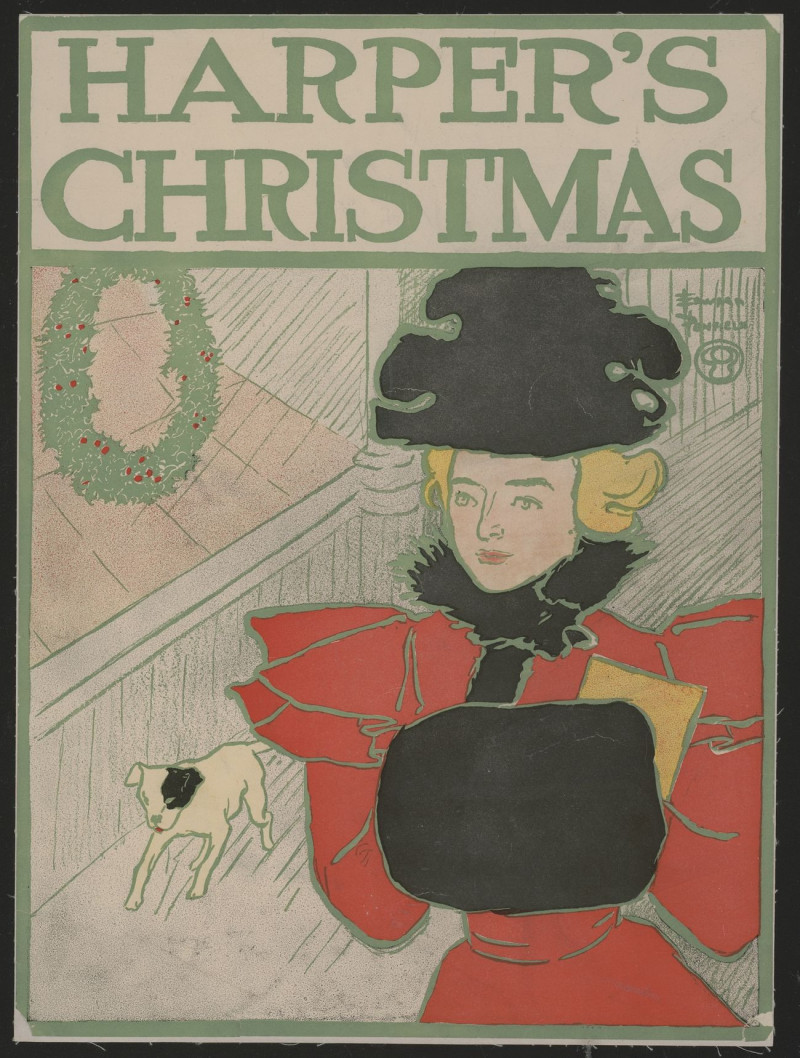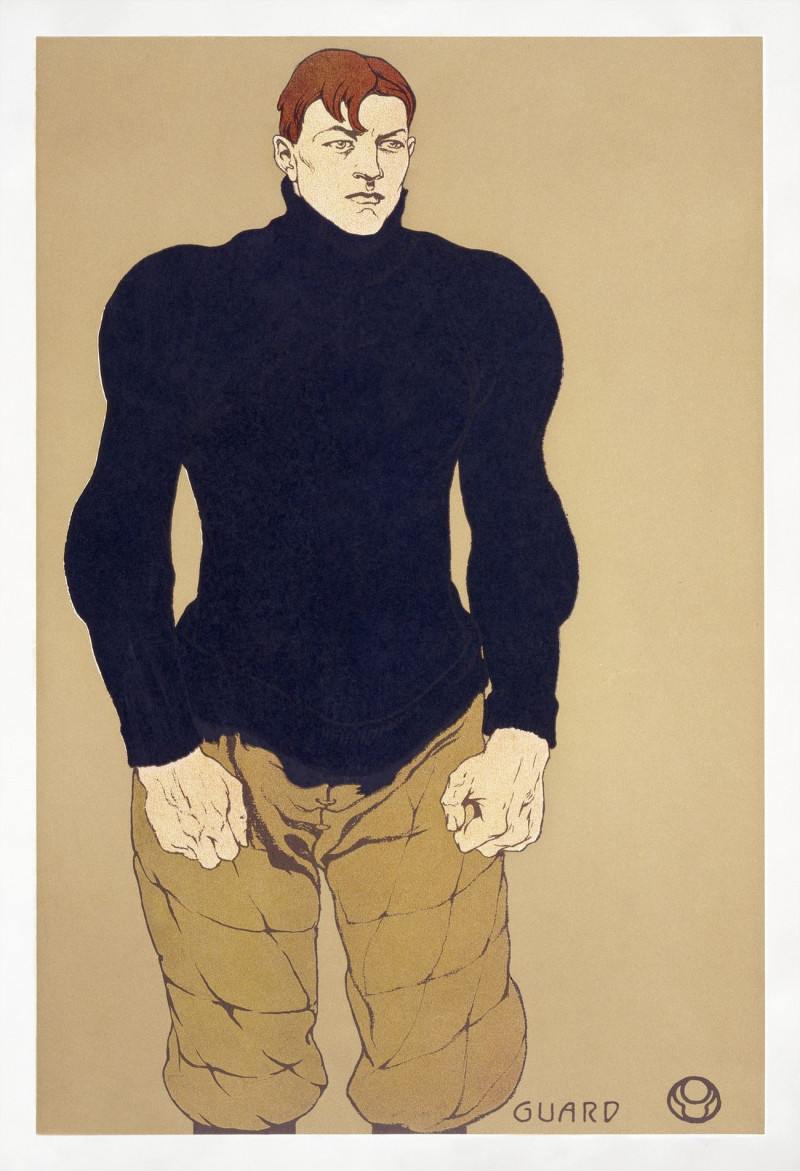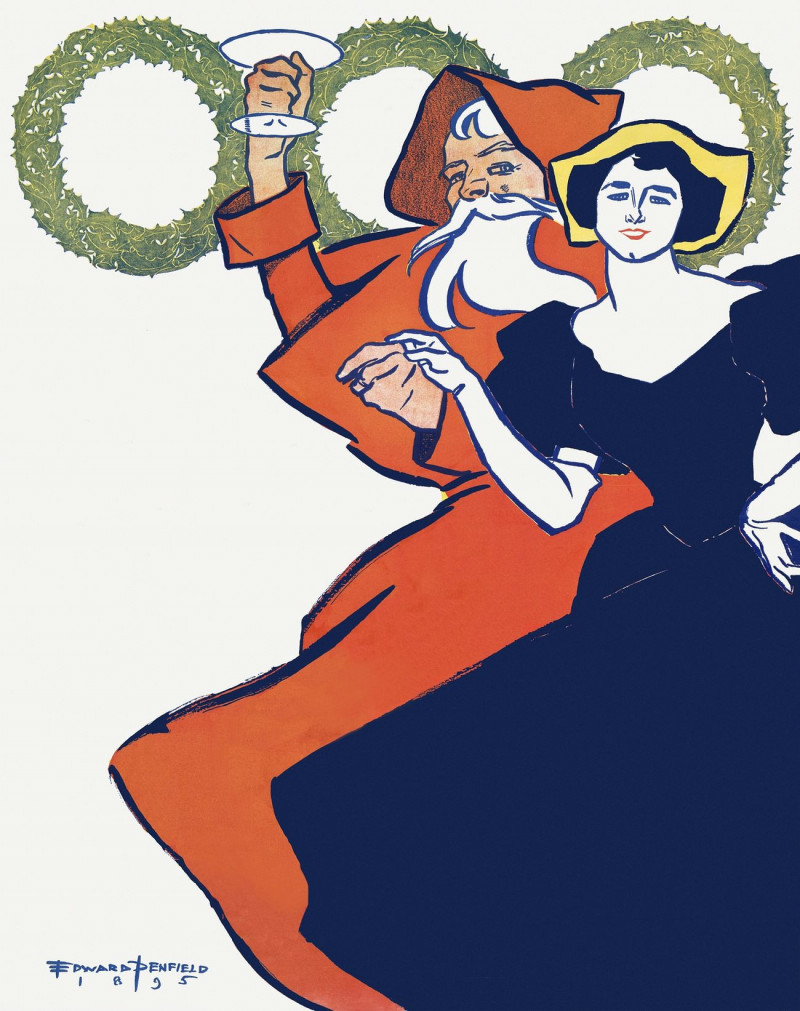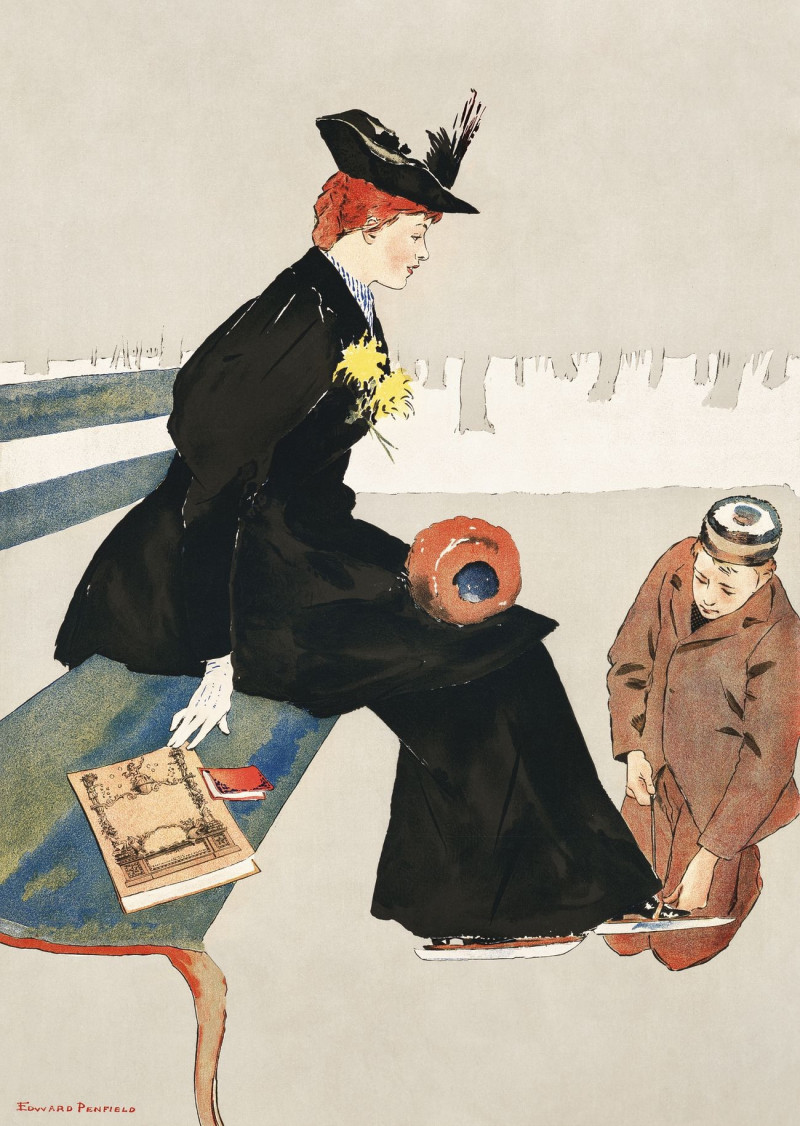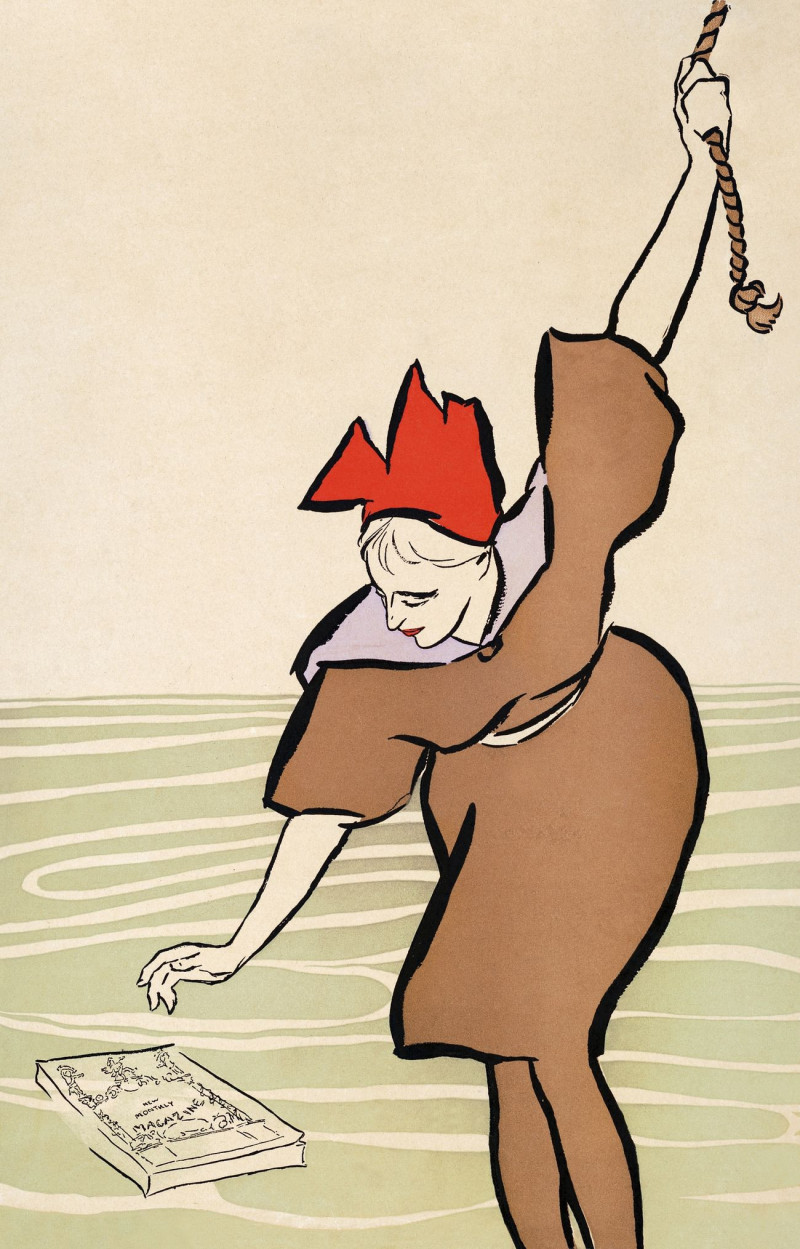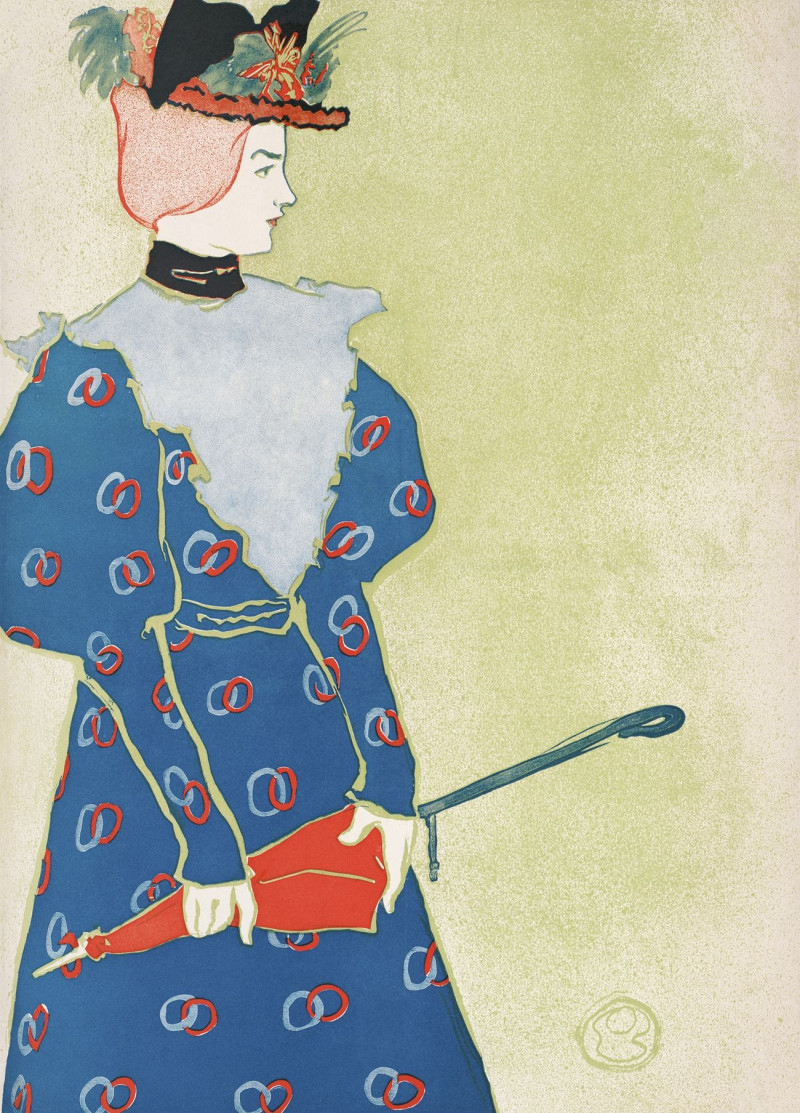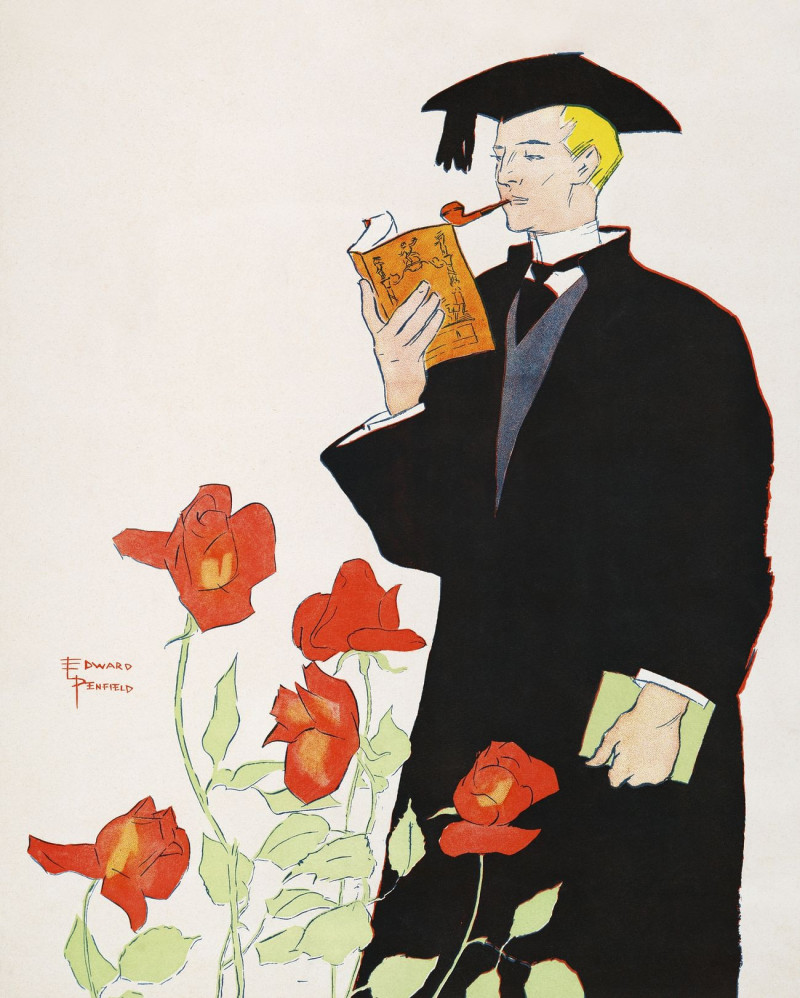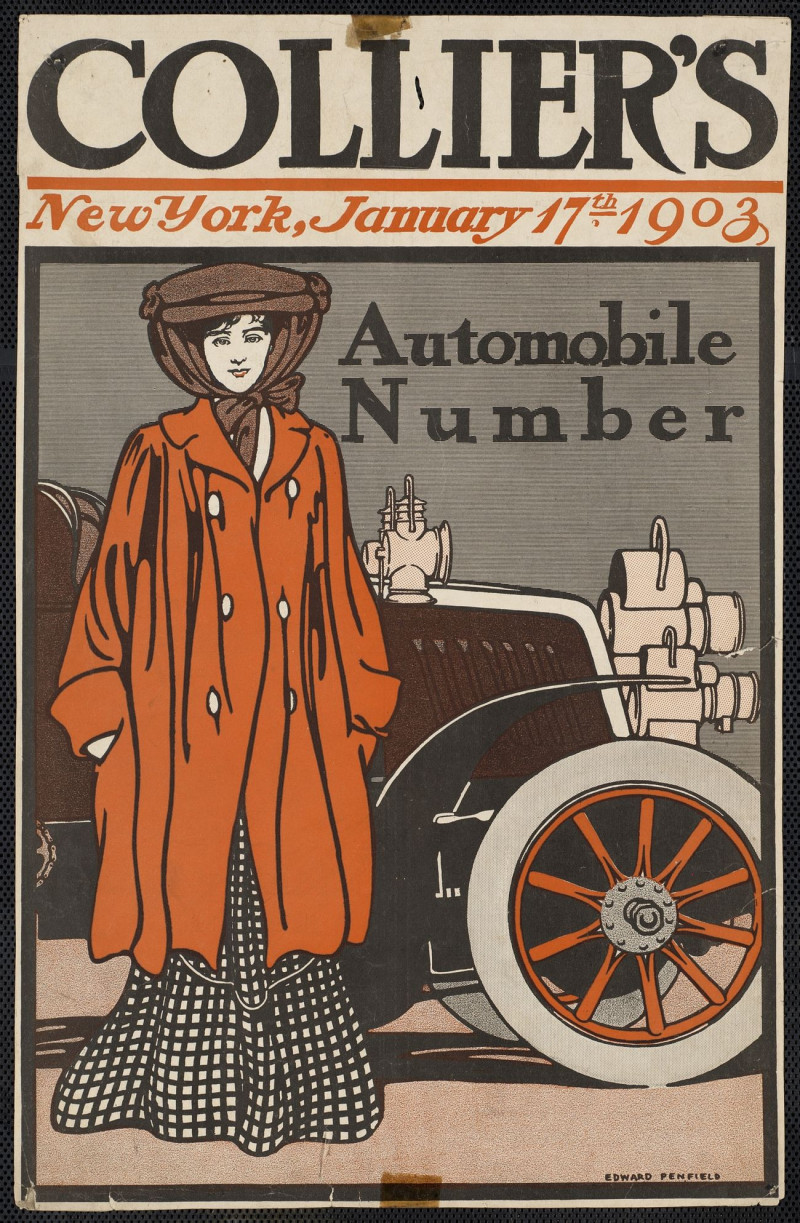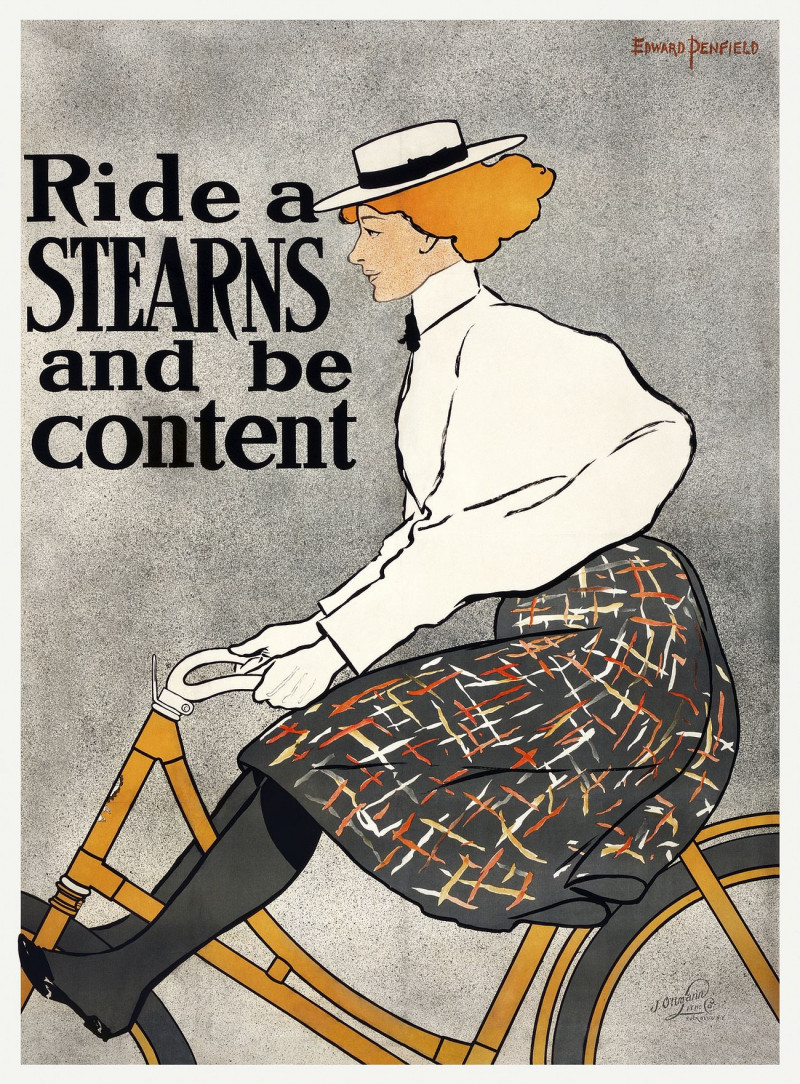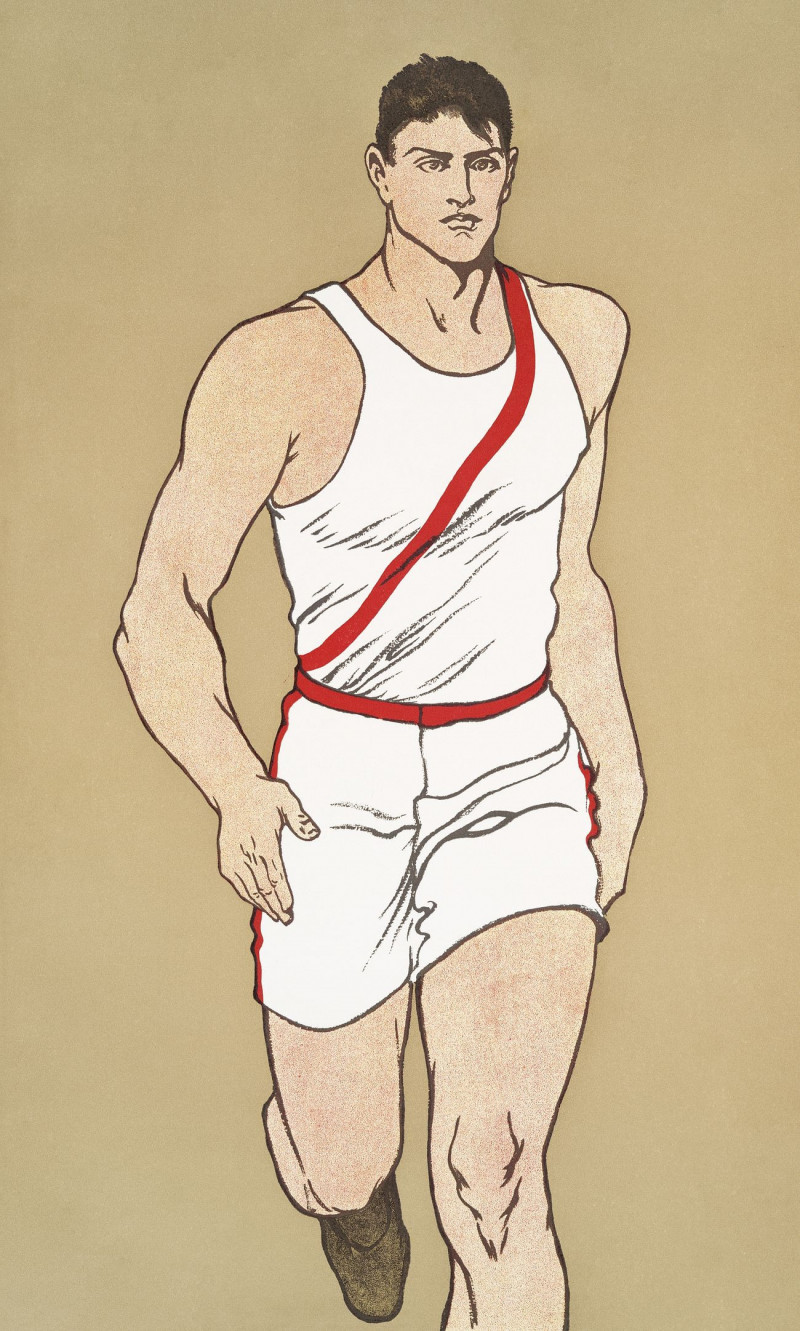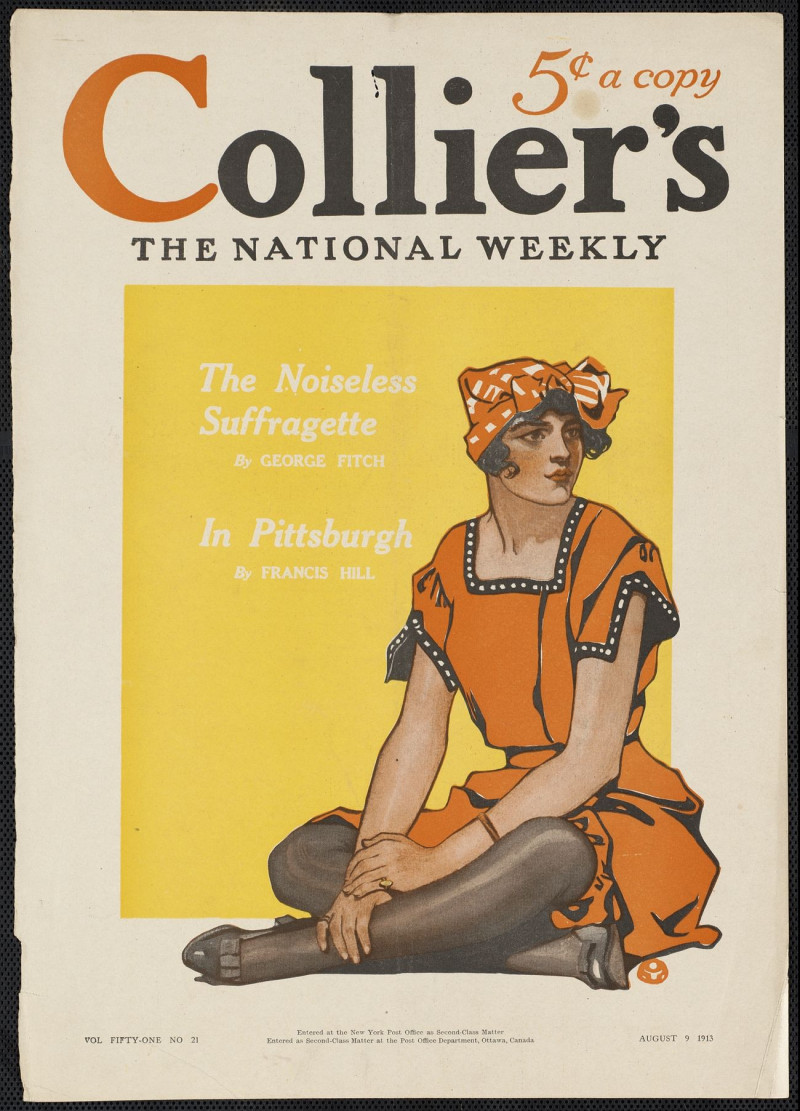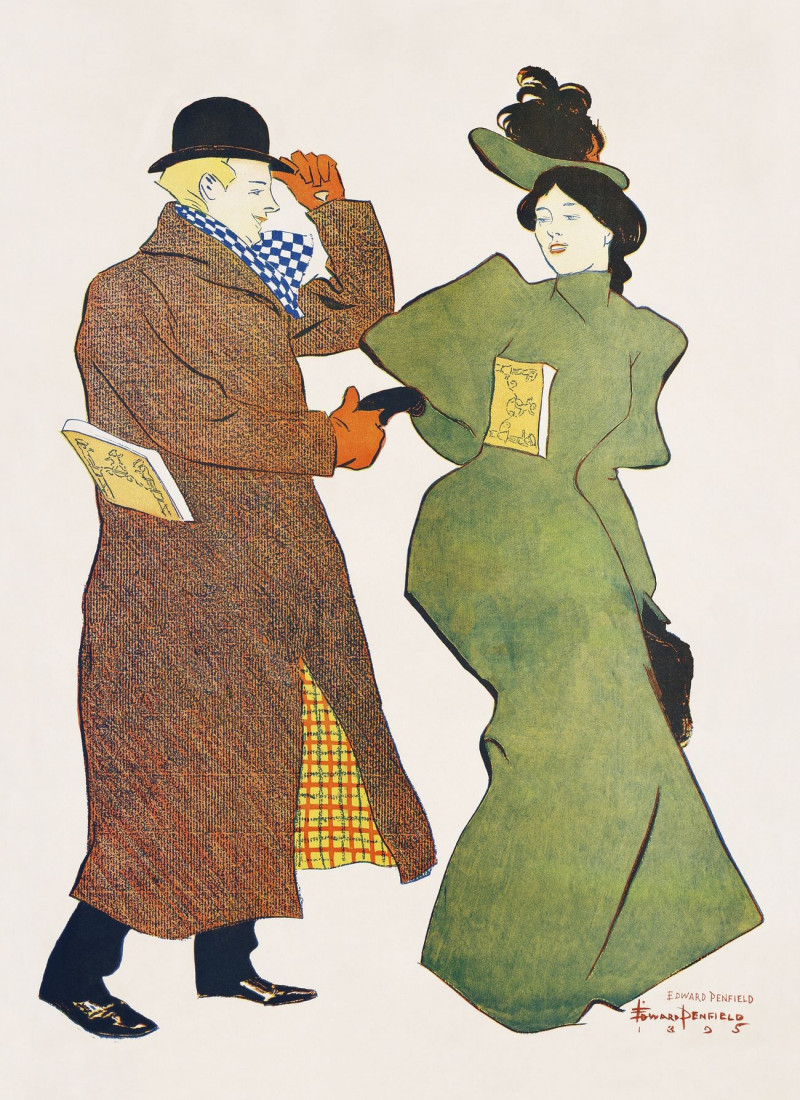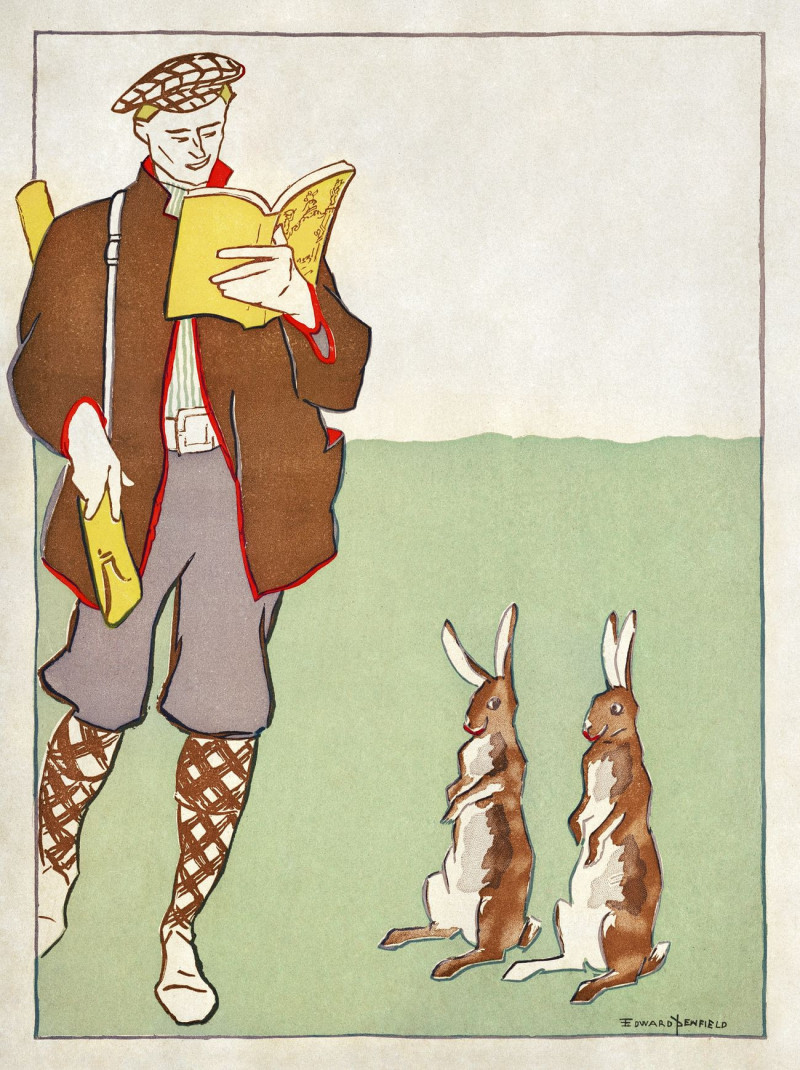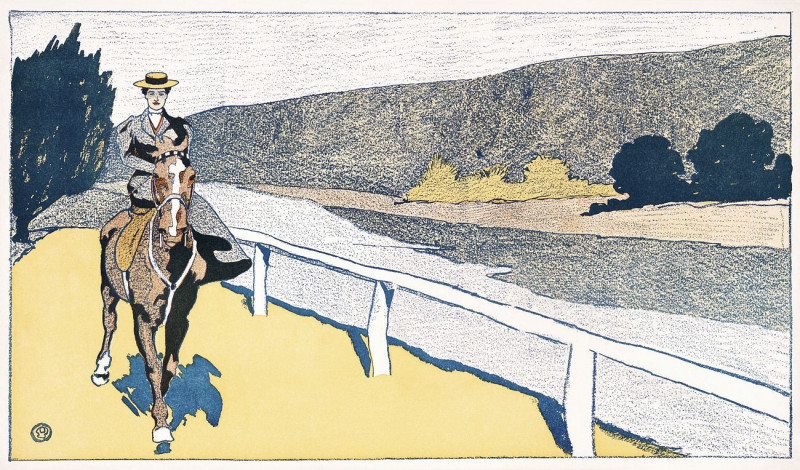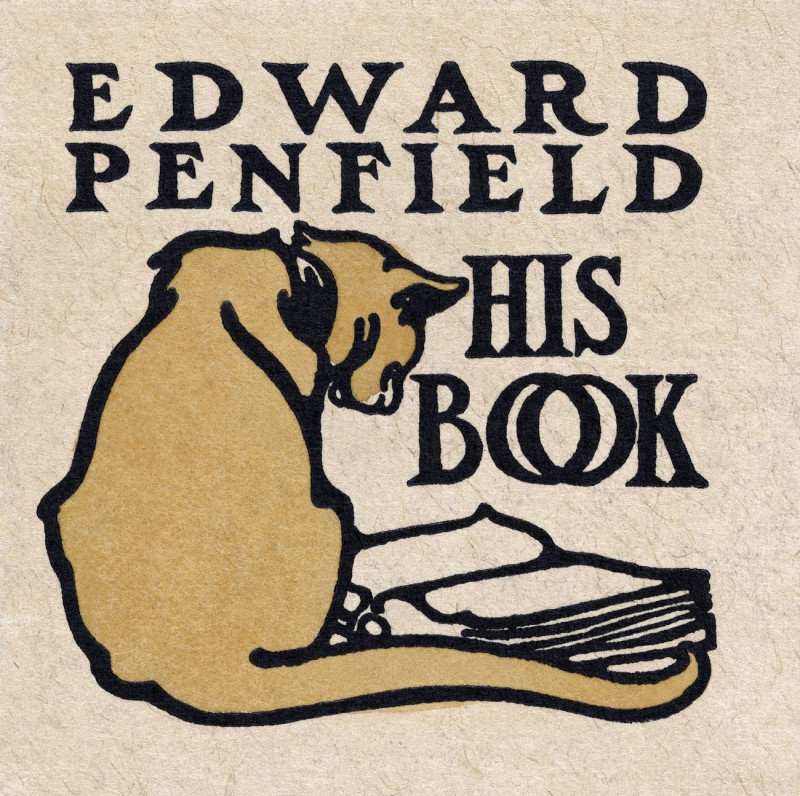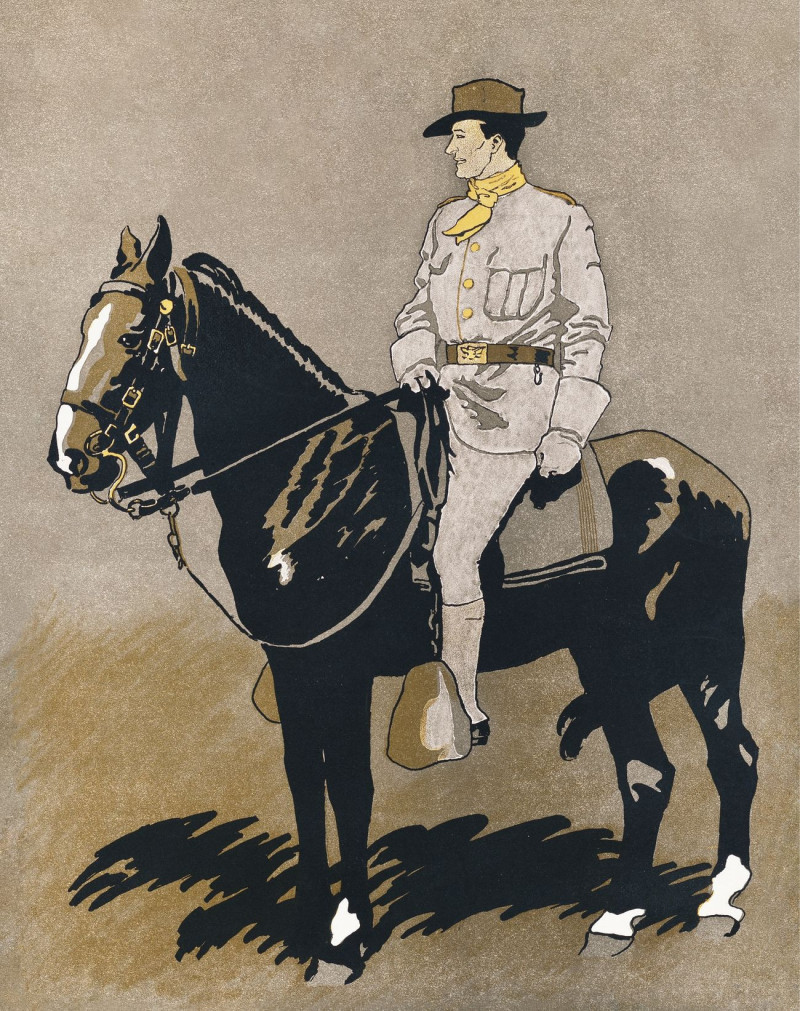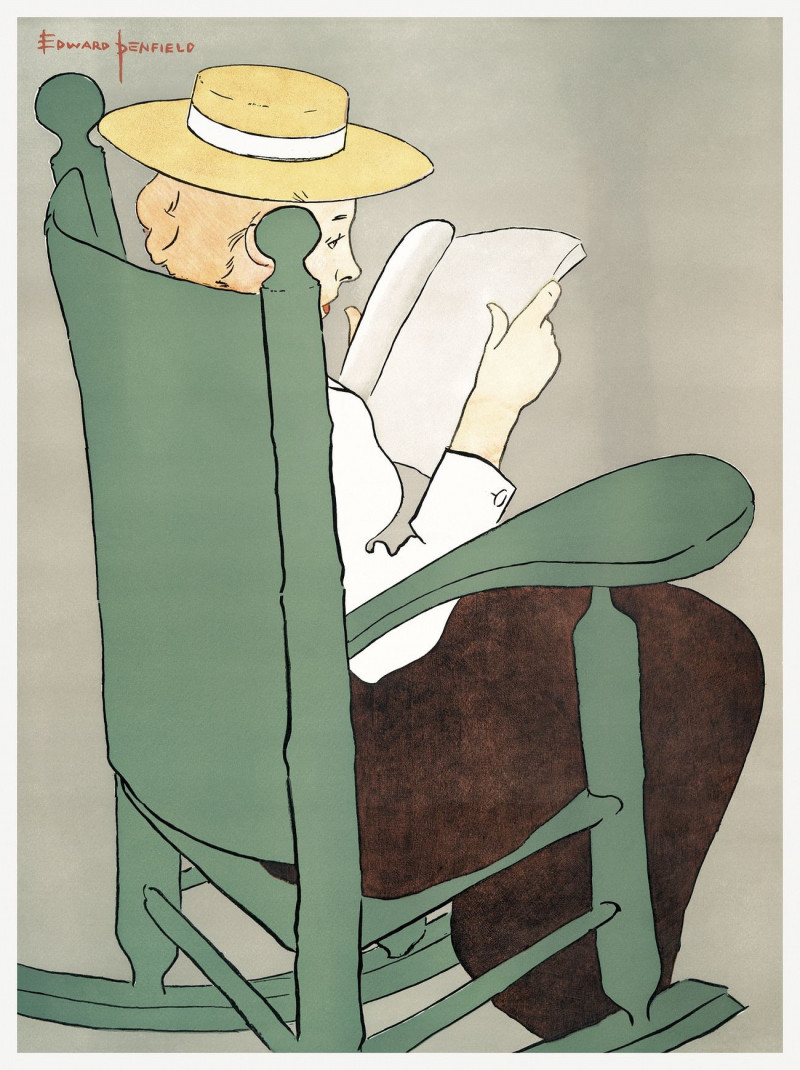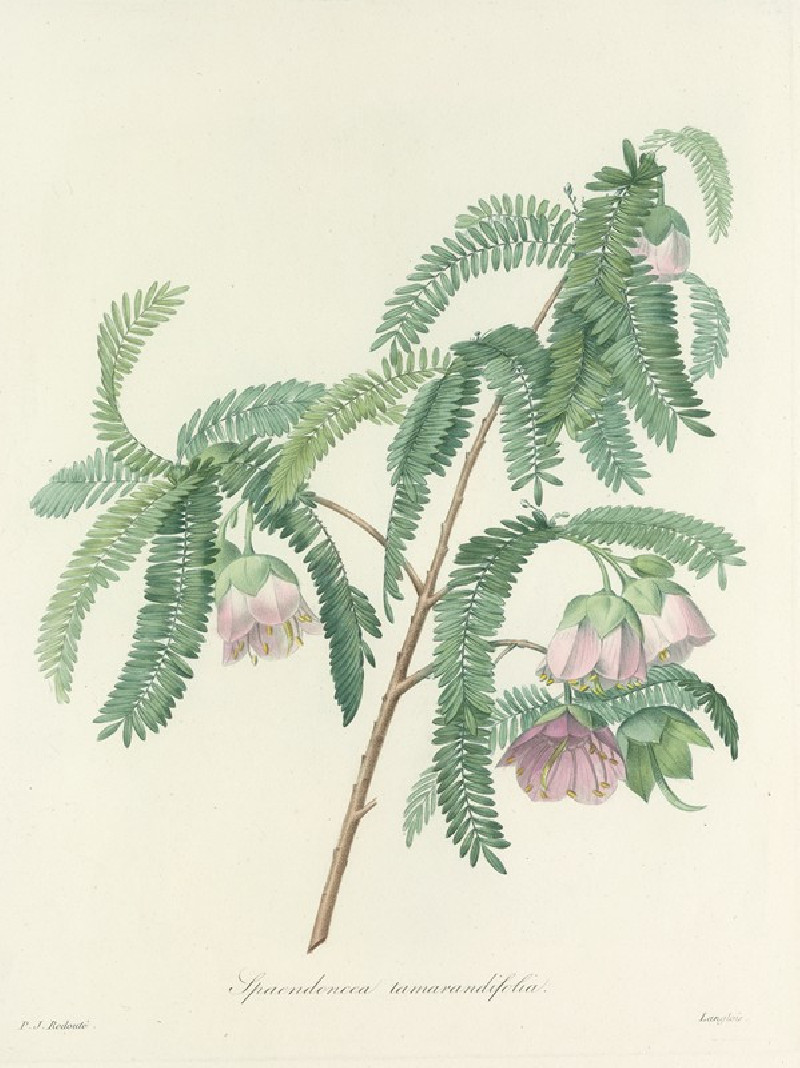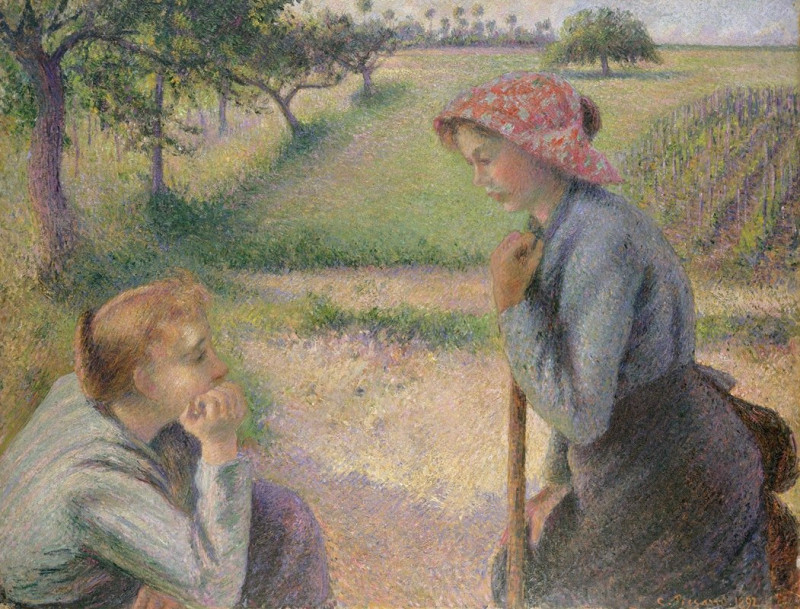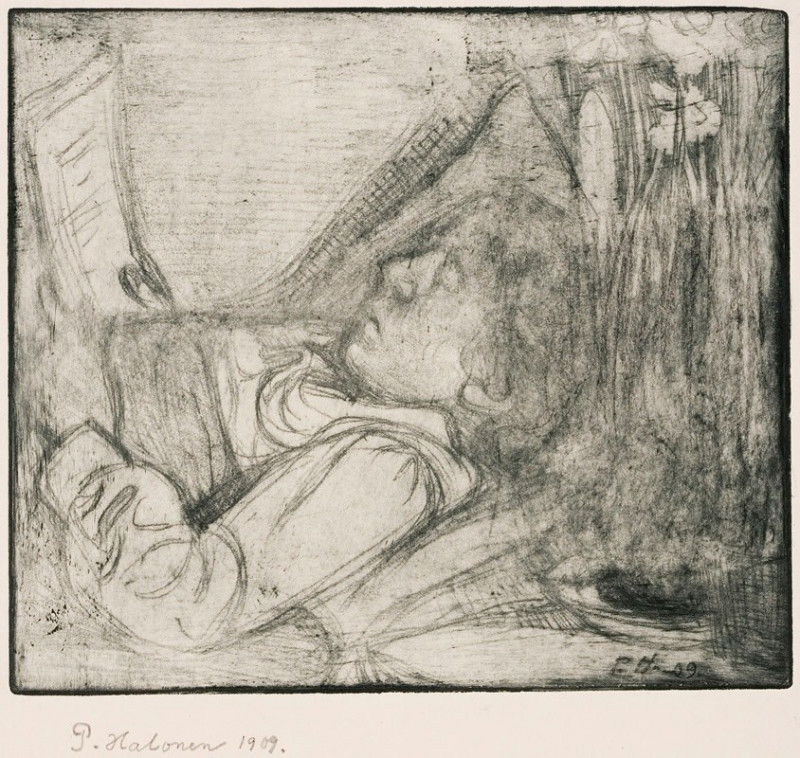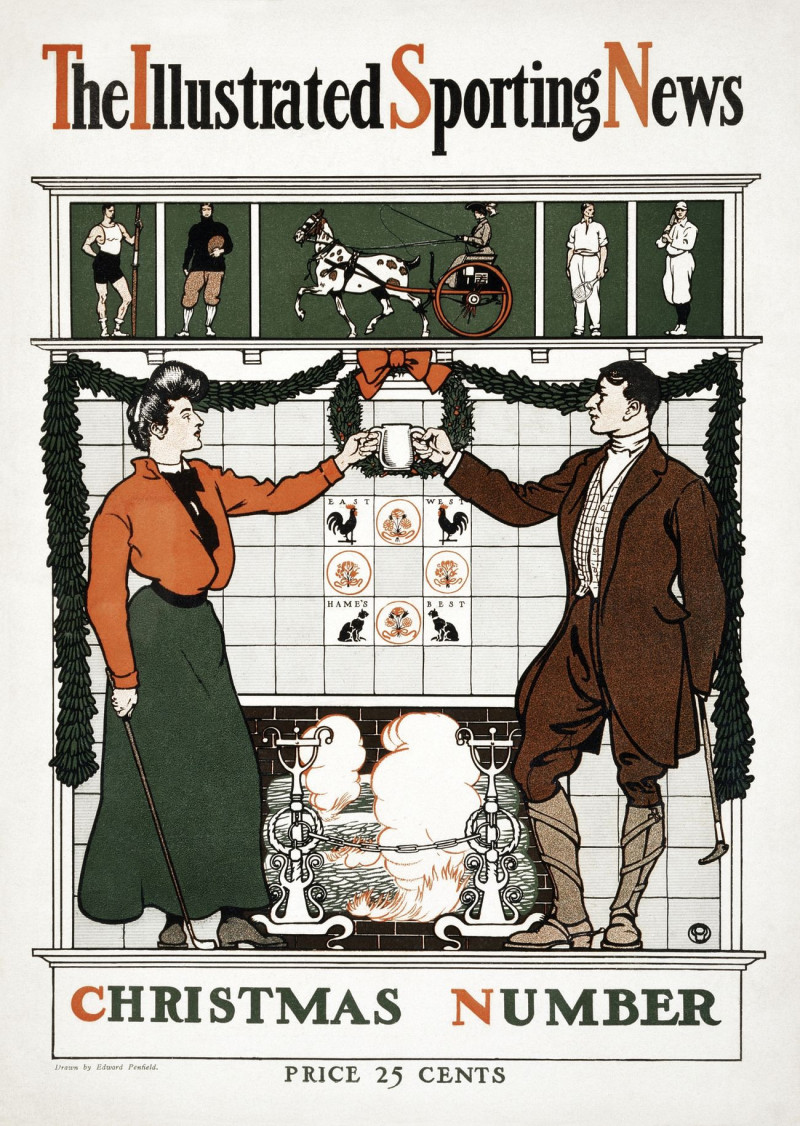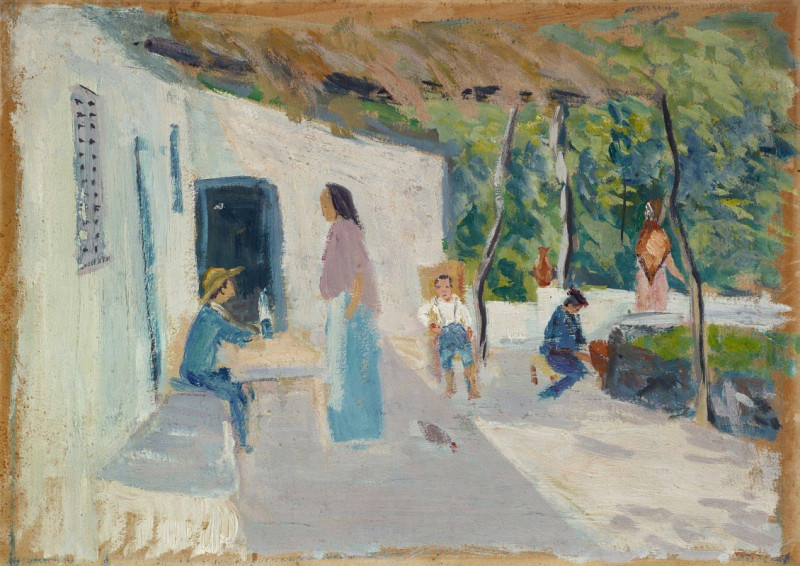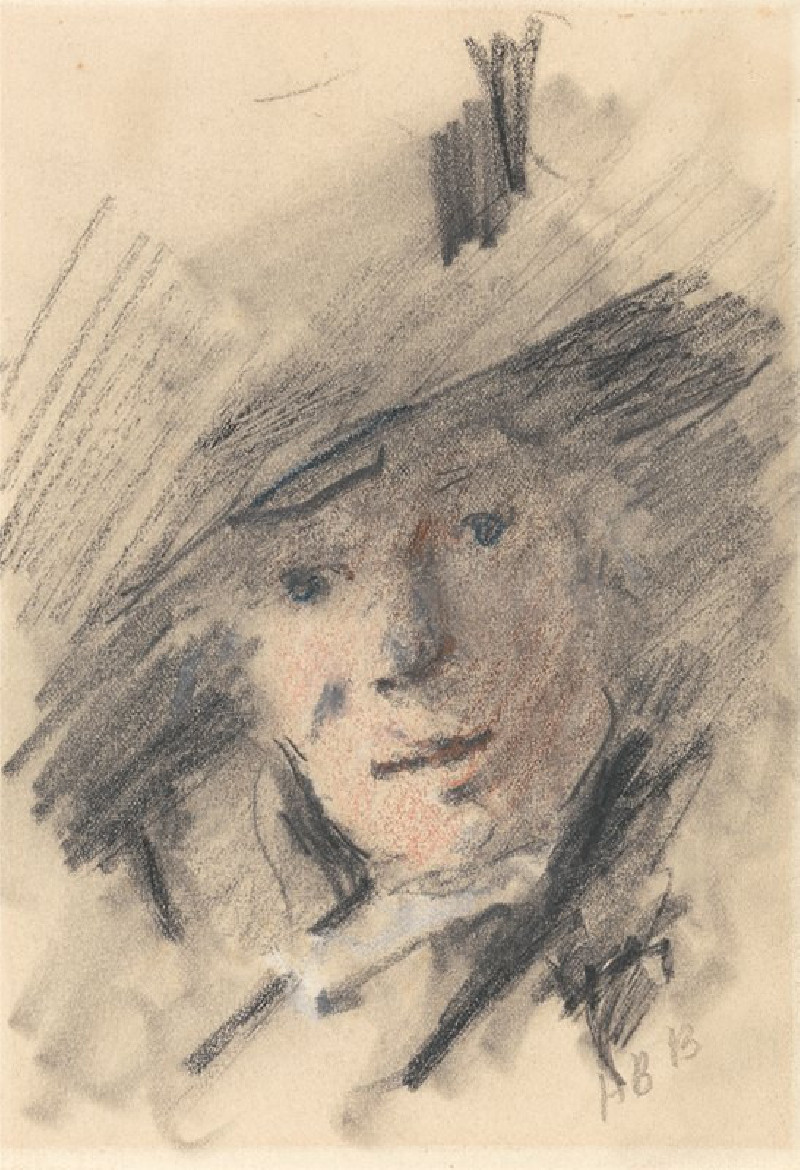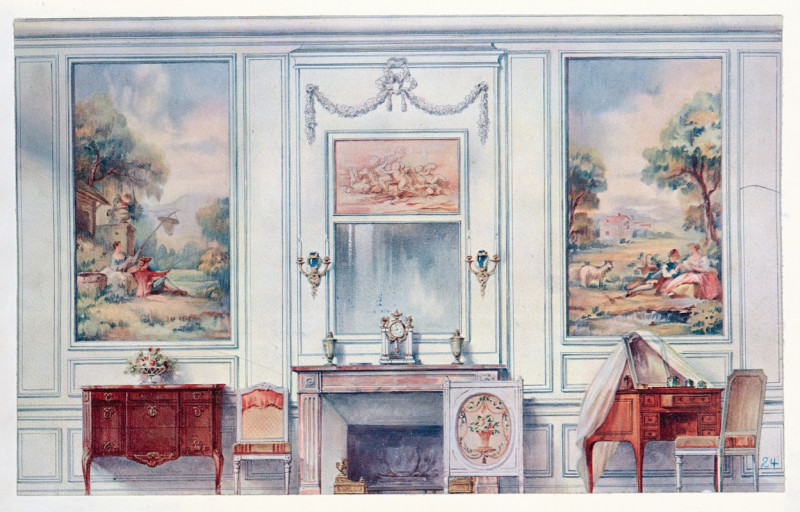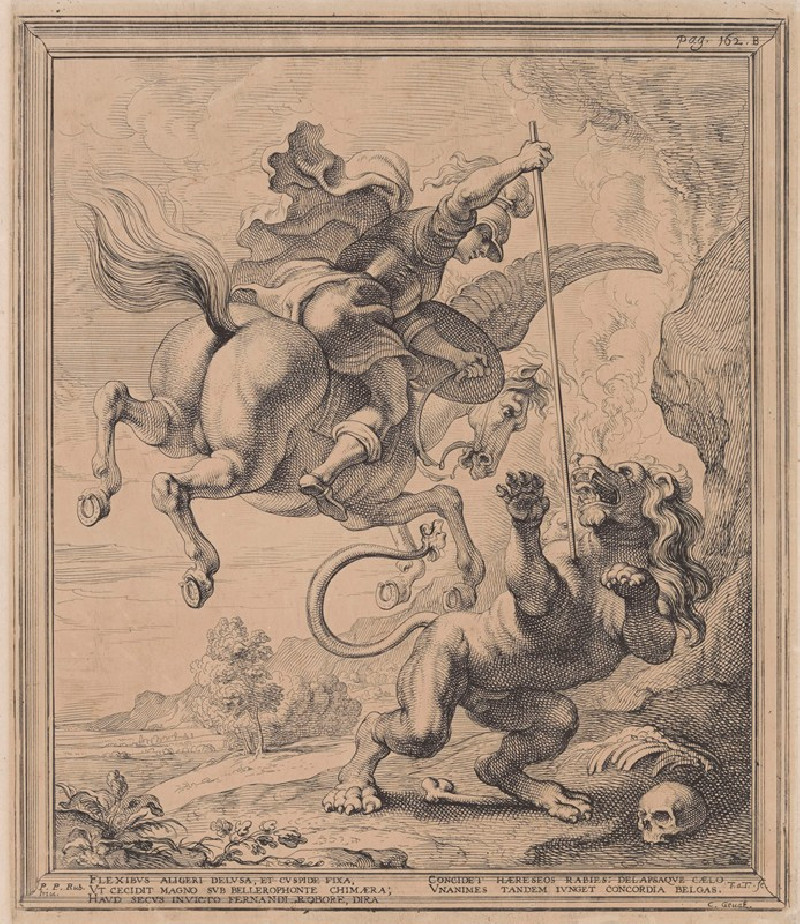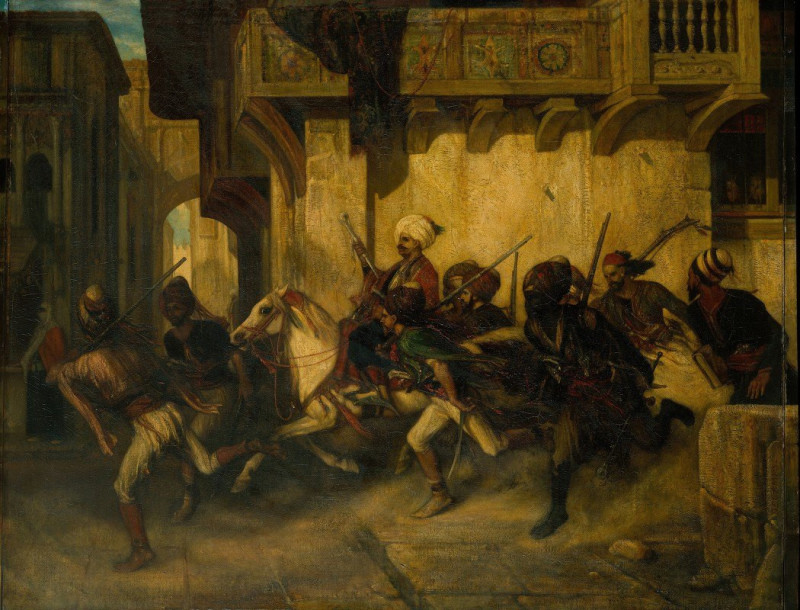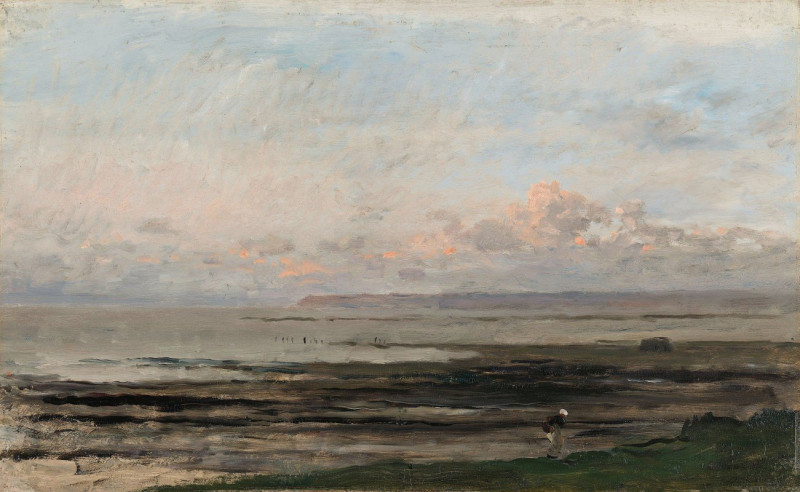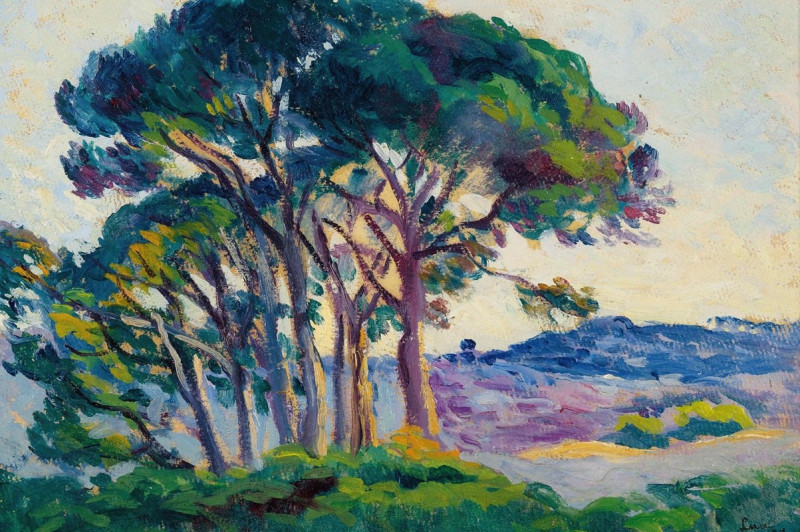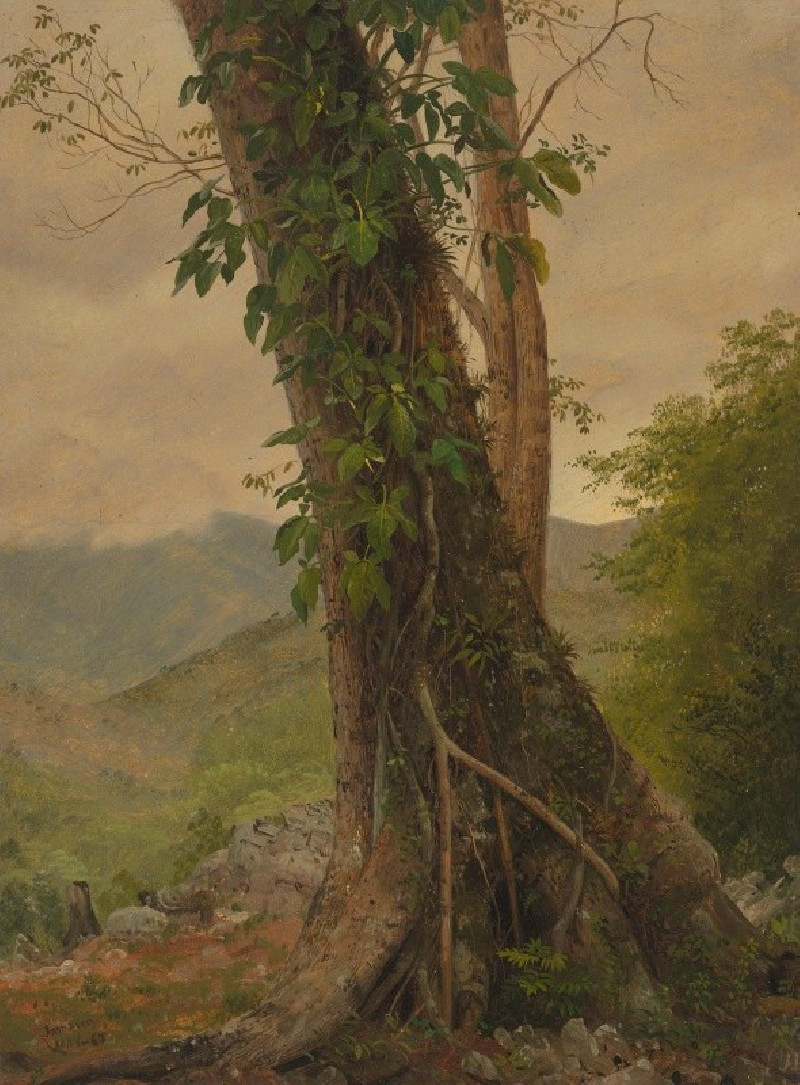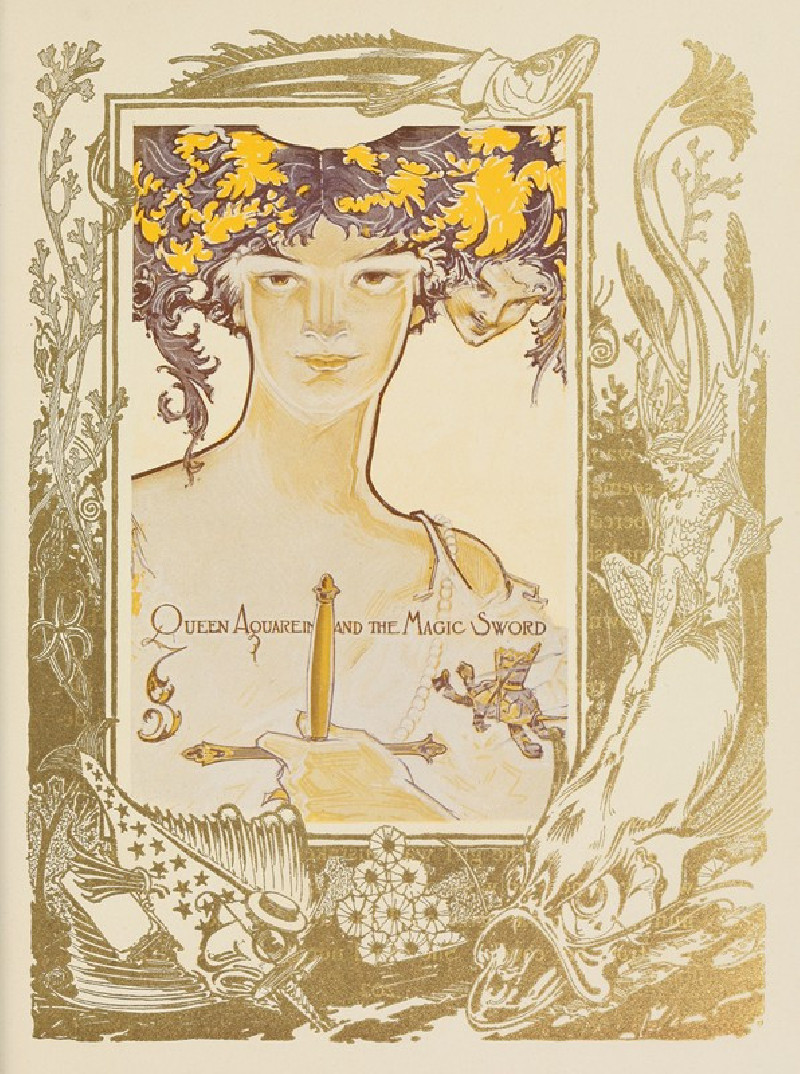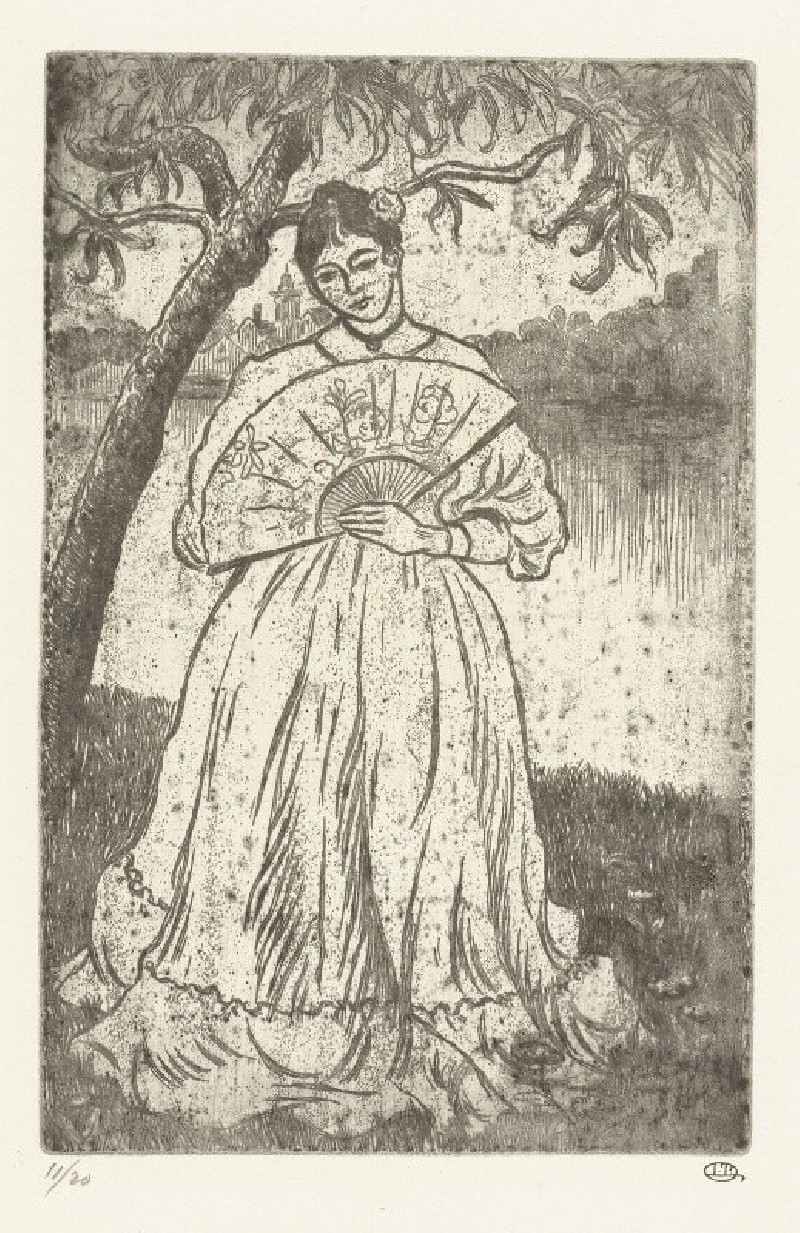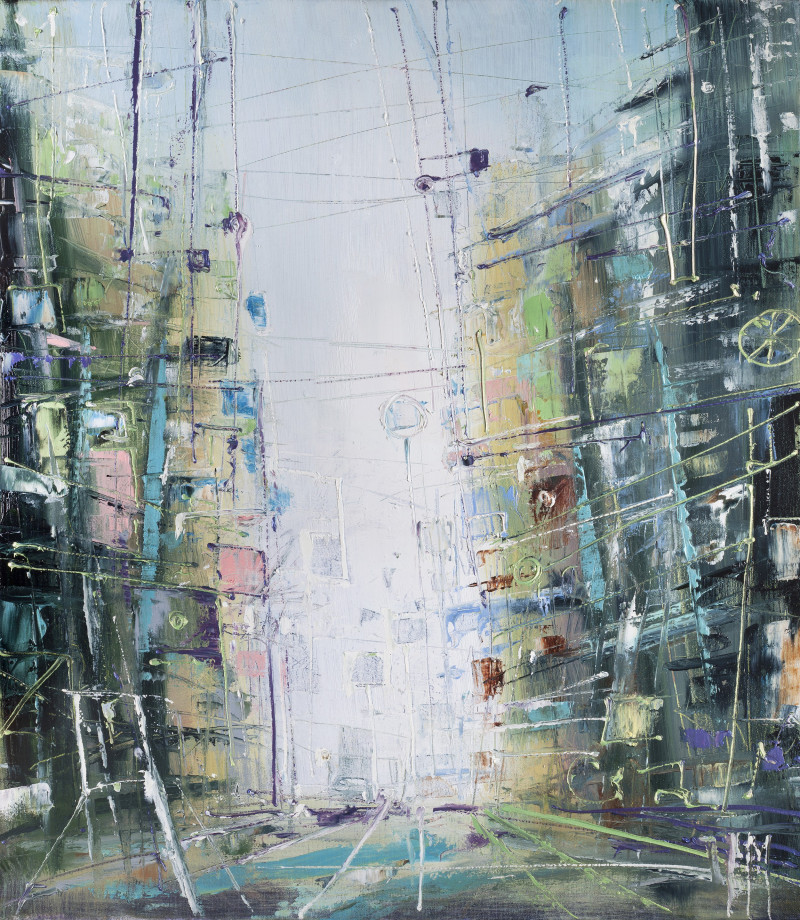Lion And A Book
Technique: Giclée quality print
Recommended by our customers
More about this artwork
This painting by Edward Penfield, titled "Lion and a Book," is an intriguing and somewhat whimsical piece. It features a lion standing upright in a very human-like pose, holding a book open as though reading it. The lion's expression is calm and thoughtful, adding a surreal and somewhat amusing quality to the image. To the right of the lion, there is a small depiction of what appears to be a calf or a young deer, looking towards the lion, possibly suggesting a narrative or symbolic connection between the two creatures.The style of the drawing is simple yet expressive, with strong outlines and minimal shading, giving it a stylized and graphic quality that is typical of Penfield's work. The entire scene is set against a plain background, which emphasizes the subjects and adds to the illustrative quality of the piece.Overall, "Lion and a Book" blends elements of the natural world with human characteristics in a way that is characteristic of certain strands of graphic illustration from the early 20th century, suggesting themes of knowledge, power, and perhaps the unexpected nature of enlightenment.
Delivery
Returns
Edward Penfield (1866-1925) was an influential American poster artist, considered as the father of the American poster movement. He was employed as an art editor for Harper’s Weekly, Monthly, and Harper’s Bazaar, where he made posters advertising each issue of the magazine for over seven years. His art was avant-garde with less concern for the dramatic curving lines of Art Nouveau, inspired by Japanese ukiyo-e block prints, figure drawings by Henri de Toulouse-Lautrec, color lithographies by Jules Chéret, and other contemporary artists. He created simplified scenes of daily life in saturated colors, including horses, cats, sports, and women’s fashion.

